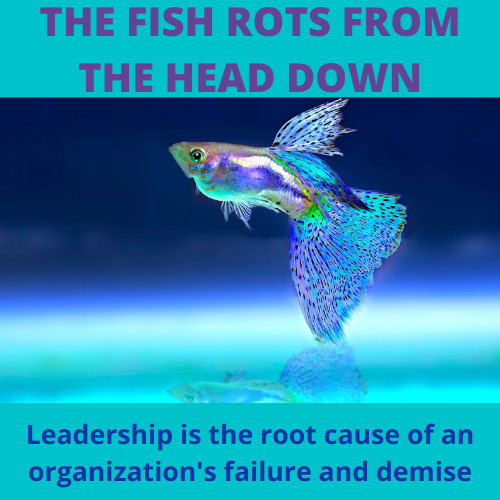
A new paper by Berkeley Haas Prof. Jennifer Chatman and colleagues shows not only the profound impact narcissistic leaders have on their organizations, but also the long-lasting damage they inflict. Like carriers of a virus, narcissistic leaders “infect” the very cultures of their organizations, the researchers found, leading to dramatically lower levels of collaboration and integrity at all levels—even after they are gone.
The paper, “When ‘Me’ Trumps ‘We’: Narcissistic Leaders and the Cultures they Create,” in-press in the journal The Academy of Management Discoveries, is co-authored by Charles A. O’Reilly of Stanford’s Graduate School of Business and former Berkeley Haas PhD student Bernadette Doerr.
In previous research about toxic leaders, Chatman and her colleagues found that narcissistic CEOs have a dark side that reveals itself slowly over time:
- Their exploitative, self-absorbed behavior sets them apart from the charismatic, “Transformational” leaders they are often confused with.
- They are also paid more than their non-narcissistic peers, and there’s a larger gap between their pay and those of other top executives in their companies, often because they are so good at unfairly claiming credit for other’s accomplishments.
- Narcissistic leaders get their companies involved in more lawsuits, as well, the research has found.
- Narcissistic leaders have personalities that are profoundly grandiose, overconfident, and dishonest, credit-stealing, and blame-throwing. They are abusive to their subordinates, think they are superior, don’t listen to experts, create conflict, and believe the rules simply don’t apply to them. They can explode in rage at any sign of disagreement or disloyalty. There’s always an “I” in their conception of the team.
The results show not only that leaders high on the narcissism scale are less collaborative and ethical, but also that the cultures of the organizations they lead are less collaborative and ethical. Ultimately, the researchers revealed exactly how narcissists institutionalize less collaborative and ethical behaviors and create lasting damage on employee morale and performance.
“Narcissistic leaders affect the core elements of organizations and their impact on society.”“Companies organize because they can do something together that no individual could accomplish alone. When narcissistic leaders undermine collaboration, they by definition reduce the effectiveness of an organization. Without integrity, an organization risks its very survival.”
How narcissists affect organizations
There’s a colorful saying that the “fish rots from the head down”—employees see leaders acting like jerks, and they become jerks, too. But it’s not a simple matter of mimicking the boss. “Narcissists don’t create narcissists,” Chatman says. “It’s not about doing what the leader does. It’s about the leader creating a culture that induces people to act less ethically and less collaboratively than they would otherwise, whether they’re narcissists or not.”
That’s because a key driver of employee behavior is their organization’s culture, not just their leader, says Chatman, a pioneering researcher in the field. “Organizational culture outlasts any leader,” she says. “Even after a leader is gone, the culture that has been cultivated has a life of its own.”
Narcissists infect the culture through the policies and practices that they directly influence, or—more often—that they fail to institute:
- They often choose not to put in place strong policies governing ethical behavior, conflicts of interest, and pay equity between men and women, as well as practices that promote teamwork and encourage people to treat others with civility and respect.
- On the flip side, they also frequently fail to sanction employees when they violate these shared norms. In effect, people get rewarded for less ethical, less collaborative behaviors.
Actions such as these create lasting organizational damage. When people aren’t able to collaborate, collective accomplishments become harder to attain. Employees’ ability to learn, grow, and gain new expertise withers. When they see leaders take credit for every success and blame others for every failure, employees’ morale sinks and their self-confidence wilts.
How to head off narcissistic leadership
To avoid narcissistic leaders, one obvious solution is to simply not hire them, or allow them to move up. Organizations should put special measures in place to screen for these personality types. A common approach involves asking tough questions to uncover negative behaviors from a wide range of references, not just those a leader provides. However, narcissists are often savvy enough to recognize who is going to sing their praises and who isn’t, and will provide a selective list of references. In some cases, executive search firms are enlisted to go beyond references and try to uncover information that is harder to find.
Still, wily narcissists can sometimes evade detection until they’ve been in place for a while. Using 360-degree evaluations from a wide range of employees can help surface self-absorbed leaders. Once it becomes clear that a company has a toxic leader at the top, it takes unflagging effort from the board to rein in a narcissist’s worst tendencies.
One of the best ways to mitigate the damage narcissistic leaders can cause is to base a significant part of their compensation and performance evaluation on the development of their people. Boards can also align a leader’s compensation to the performance of their team, and boards can devise ways to reward collaboration with peers. Measures such as these help ensure leaders cannot circumvent sharing credit and working with others.
Chatman’s findings show that after a narcissist leader gets a strong foothold, removing them is only the first step in repairing the organization. “The culture leaders helped create will still be embedded in the policies and practices that reward people for prioritizing non-collaborative and unethical behaviors. Turning around this kind of culture will take explicit effort and likely a significant amount of time.”